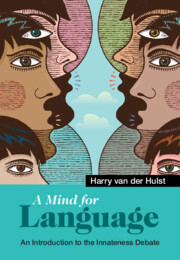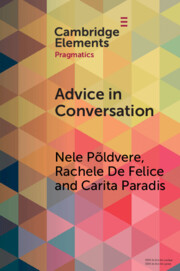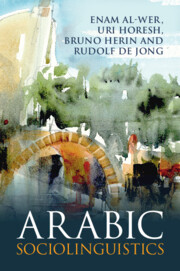78 results
Chapter 9 - Intensifiers across Time
-
- Book:
- Intensifiers in Late Modern English
- Published online:
- 15 March 2024
- Print publication:
- 28 March 2024, pp 212-229
-
- Chapter
- Export citation
The evolution of bare nouns in the history of French. The view from calibrated corpora
-
- Journal:
- Journal of French Language Studies , First View
- Published online by Cambridge University Press:
- 22 March 2024, pp. 1-28
-
- Article
-
- You have access
- Open access
- HTML
- Export citation
Chapter 6 - On Quine’s Epistemological Objection to Carnap’s Analyticity
- from Part II - Naturalism and Method
-
-
- Book:
- Interpreting Carnap
- Published online:
- 01 February 2024
- Print publication:
- 08 February 2024, pp 106-126
-
- Chapter
- Export citation
27 - Sociolinguistic Implications of Orthographic Variation in French
- from Part V - Explanatory Discussions
-
-
- Book:
- The Cambridge Handbook of Historical Orthography
- Published online:
- 28 September 2023
- Print publication:
- 12 October 2023, pp 537-554
-
- Chapter
- Export citation
8 - Language Change
- from III - The Mental Grammar, Language Universals, and Language Change
-
- Book:
- A Mind for Language
- Published online:
- 13 October 2023
- Print publication:
- 21 September 2023, pp 251-290
-
- Chapter
- Export citation

A Mind for Language
- An Introduction to the Innateness Debate
-
- Published online:
- 13 October 2023
- Print publication:
- 21 September 2023
-
- Textbook
- Export citation
Chapter 1 - Introduction: What Is ‘Early Latin’?
-
-
- Book:
- Early Latin
- Published online:
- 27 July 2023
- Print publication:
- 17 August 2023, pp 1-12
-
- Chapter
- Export citation
The role of speaker sex and sexuality in an ongoing sound change: Nasal vowels in Parisian French
-
- Journal:
- Journal of French Language Studies / Volume 33 / Issue 3 / November 2023
- Published online by Cambridge University Press:
- 11 July 2023, pp. 357-384
-
- Article
-
- You have access
- Open access
- HTML
- Export citation
2 - Language Change
-
- Book:
- Place Names
- Published online:
- 02 March 2023
- Print publication:
- 09 March 2023, pp 24-45
-
- Chapter
- Export citation
Implications
-
- Book:
- Native Speakers, Interrupted
- Published online:
- 15 December 2022
- Print publication:
- 22 December 2022, pp 281-292
-
- Chapter
- Export citation
10 - Intergenerational Transmission
-
- Book:
- Native Speakers, Interrupted
- Published online:
- 15 December 2022
- Print publication:
- 22 December 2022, pp 261-280
-
- Chapter
- Export citation
Subject relative who in Ontario, Canada: Change from above in a transplanted ecology
-
- Journal:
- Journal of Linguistic Geography / Volume 11 / Issue 1 / April 2023
- Published online by Cambridge University Press:
- 28 October 2022, pp. 25-37
-
- Article
-
- You have access
- Open access
- HTML
- Export citation

Advice in Conversation
- Corpus Pragmatics Meets Mixed Methods
-
- Published online:
- 21 October 2022
- Print publication:
- 10 November 2022
-
- Element
-
- You have access
- Open access
- HTML
- Export citation
7 - Uh, What Should We Count?
- from Part II - Innovative Variables in English
-
-
- Book:
- Discourse-Pragmatic Variation and Change
- Published online:
- 14 July 2022
- Print publication:
- 28 July 2022, pp 150-172
-
- Chapter
- Export citation
1 - Reflexes of Abruptness in the Development of Pragmatic Markers
- from Part I - Innovations in Theory and Method
-
-
- Book:
- Discourse-Pragmatic Variation and Change
- Published online:
- 14 July 2022
- Print publication:
- 28 July 2022, pp 15-39
-
- Chapter
- Export citation
6 - “That Is Totally Not My Type of Film”
- from Part II - Innovative Variables in English
-
-
- Book:
- Discourse-Pragmatic Variation and Change
- Published online:
- 14 July 2022
- Print publication:
- 28 July 2022, pp 127-149
-
- Chapter
- Export citation
5 - An Emerging Pragmatic Marker
- from Part II - Innovative Variables in English
-
-
- Book:
- Discourse-Pragmatic Variation and Change
- Published online:
- 14 July 2022
- Print publication:
- 28 July 2022, pp 107-126
-
- Chapter
- Export citation

Arabic Sociolinguistics
-
- Published online:
- 01 July 2022
- Print publication:
- 07 July 2022
10 - Perspectives on Creole Formation
- from Part Two - Contact, Emergence, and Language Classification
-
-
- Book:
- The Cambridge Handbook of Language Contact
- Published online:
- 02 June 2022
- Print publication:
- 30 June 2022, pp 257-282
-
- Chapter
- Export citation
Dialect levelling and Cockney diphthong shift reversal in South East England: the case of the Debden Estate
-
- Journal:
- English Language & Linguistics / Volume 26 / Issue 4 / December 2022
- Published online by Cambridge University Press:
- 12 May 2022, pp. 621-643
-
- Article
-
- You have access
- Open access
- HTML
- Export citation



